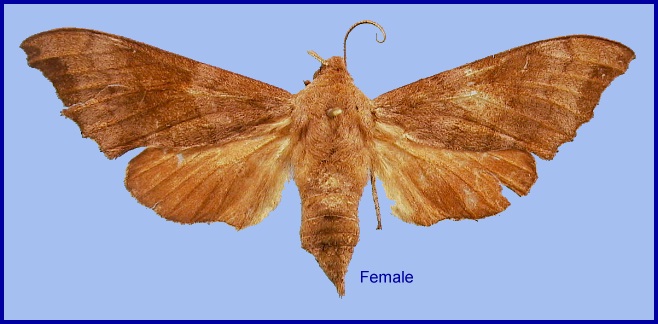
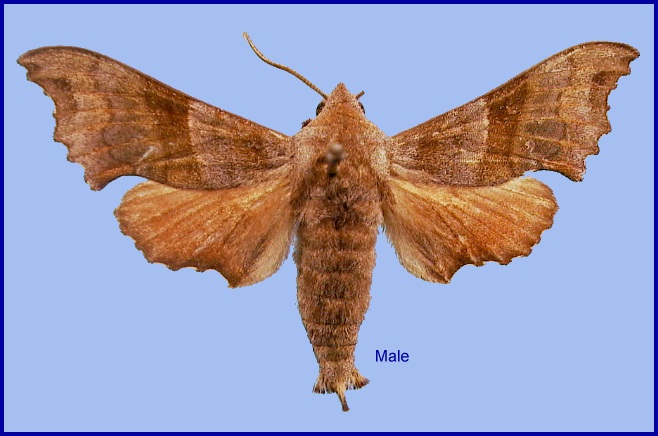
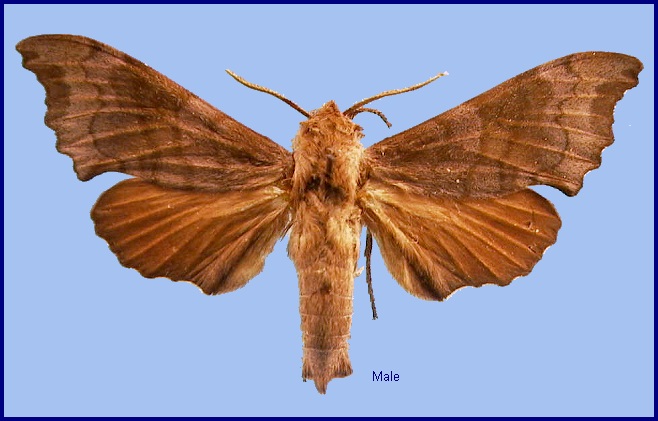
Smerinthulus chinensis Rothschild & Jordan, 1903, Novit. zool. 9 (suppl.): 299 (key), 301. Type locality: China, [Fujian, Qingliu County,] Léou-Pang <<Léou Fang>> [Liufang].
Synonym. Smerinthulus chinensis Rothschild & Jordan, 1903.
Synonym. Cypa formosana Wileman, 1910.
Synonym. Amorphulus chinensis fasciata Mell, 1922.
Synonym. Enpinanga transtriata Chu & Wang, 1980, Acta zootaxon. sin. 5: 420. Type locality: China, Fujian, Chong'an, 740m.
Note. Chu & Wang (1980) misidentified Cypoides chinensis (Rothschild & Jordan) as Laothoe amurensis sinica. Other Chinese authors have perpetuated this error.
Wingspan: 38--43mm. In general appearance similar to Cypa decolor but forewing broader and hindwing upperside a rusty red and brighter in colour. Very like a small, pale Laothoe populi.
In the male genitalia, uncus similar to that of Cypa decolor but narrowing more gradually. Gnathos with a sharply pointed, narrow medial process. Valva sole-shaped, narrow. Harpe dilated and very strongly sclerotised proximally, with a single distal process. Phallus curved, with the opening covered by a kind of operculum.
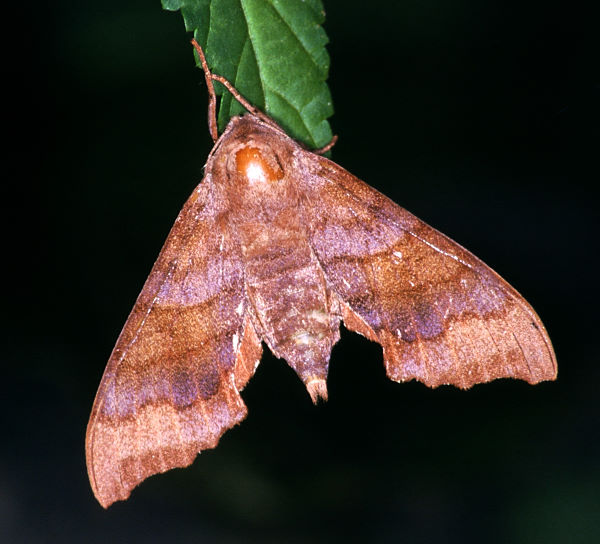
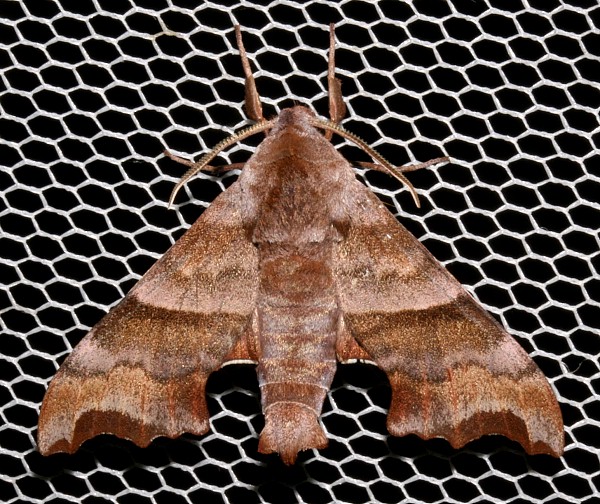
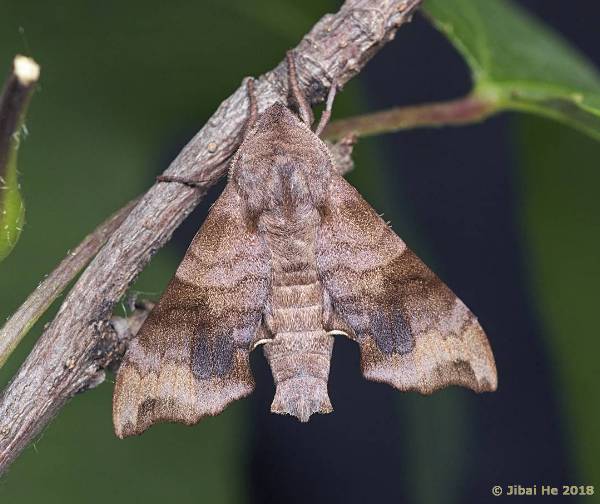
China: 9.i (Guangdong); 25-27.i (Hong Kong); iii (Hunan); 9.iii (Guangdong); iv (Guizhou; Shaanxi; Zhejiang; Guangxi); 27.iii-27.iv (Zhejiang); 14.v (Fujian, 740m); vi (Hainan); 8.vi (Anhui), 27.vi (Fujian); 12.vii (Hubei; Hunan); 5.viii (Chongqing); 20.viii (Zhejiang); 22.viii (Guangdong); viii-ix (Hunan); 7.ix-x (Hong Kong); 14.x (Guangxi). Taiwan: iii (Nantou Hsien); iv (Hualien Hsien); vi (Nantou Hsien); viii (Nantou Hsien; Taoyuan Hsien); x (Nantou Hsien).
This species is generally single brooded in Hong Kong, flying from January until March, with a peak in February (Roger Kendrick, pers. comm.). The summer appears to be spent as a diapausing pupa, which emerges with the onset of cooler winter weather; however, it appears that in some (?cooler) years some adults will appear on the wing again in September and October. Farther north the species is double brooded.
In Thailand this species flies in July and August during the wet season (Inoue et al., [1996]).
OVUM:
LARVA: 45mm.
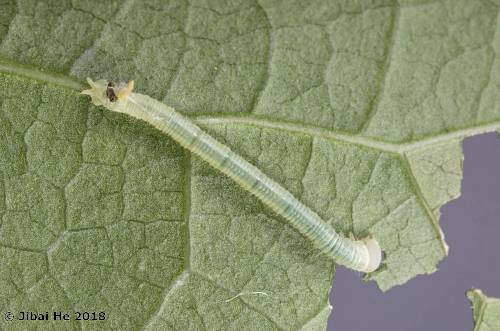
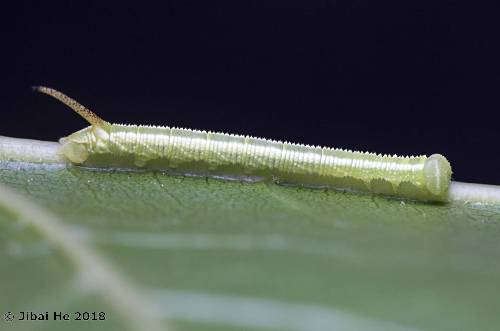
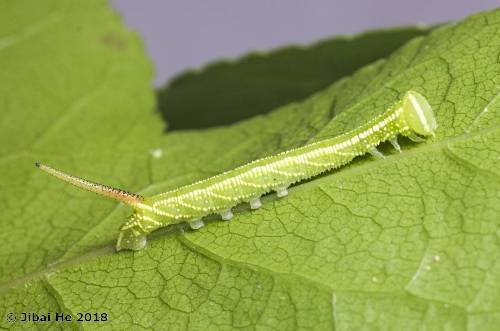
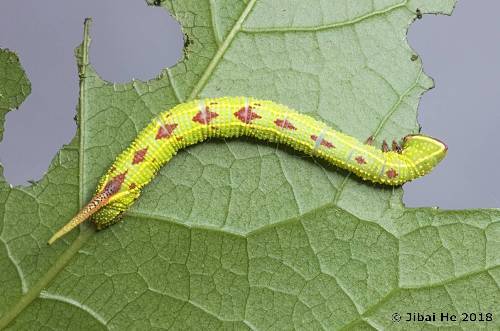
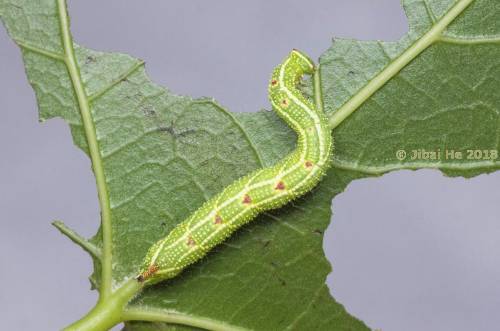
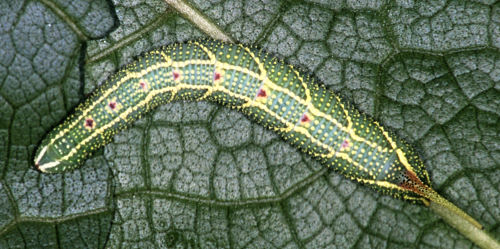







PUPA:
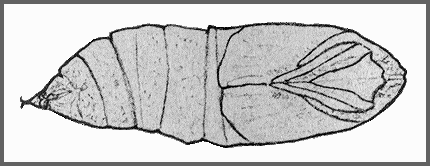
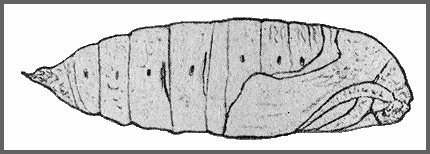
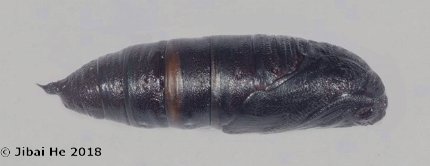
Larval hostplants. Recorded from Guangdong on Liquidambar formosana (Mell, 1922b); the same tree is also utilized in Hong Kong (Roger Kendrick, pers. comm.) and Taiwan. Wang (1992) also list Broussonetia papyrifera and Quercus as hostplants for China, but these odd records need confirmation.
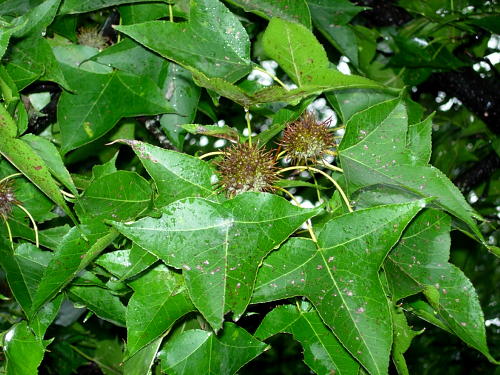
Unknown.
China: Shaanxi (Jiangkou, 1600m); Anhui (Huang Shan); Zhejiang (Hangzhou; Kuocang Mountain Nature Reserve; Yeshan Village, Taishun County); Hubei (Shennongjia; Wuhan); Chongqing (Simianshan); Guizhou (Jiucai Ling); Hunan (Dayong; Landong; Zhuzhou); Jiangxi (Pingxiang; Wanzai); Fujian (Chong'an, 740m; Liufang); Guangdong (Guangzhou; Lienping); Hong Kong; Guangxi (Longhushan; Maoer Shan, 1800m; Nanning); Guangxi (Yinzhulaoshan Provincial Nature Reserve, Guilin); Hainan (Youboi).
Taiwan: Hualien Hsien (Taroko National Park); Nantou Hsien (Lushan Spa; Fushih Spa; Jenai; Kuantauchi); Taiko; Taoyuan Hsien (Paleng); Taipei (Jingshan); Taipei Hsien (Fushan); Yilan Hsien (Tianone, 1200m).
Occurs primarily in southeastern China and Taiwan, but extending south to mountainous northern Vietnam, central Laos and central Thailand (Inoue et al., [1996]).
A population of Cypoides chinensis recorded from northeastern Thailand (Inoue, Kennett & Kitching, [1996] 1997) may be Cypoides parachinensis, but this needs to be confirmed. Another population from northern Vietnam, recorded as the new species Cypoides viethangae Eitschberger & Nguyen, 2017, may also be Cypoides parachinensis (Ian Kitching, pers. comm. 2020).
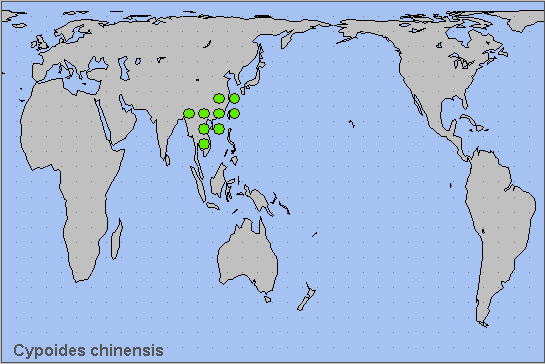
Holarctic; eastern Palaearctic region. Pleistocene refuge: Monocentric -- Yunnan refugium.
 Return to Sphingidae of the Eastern Palaearctic species list
Return to Sphingidae of the Eastern Palaearctic species list